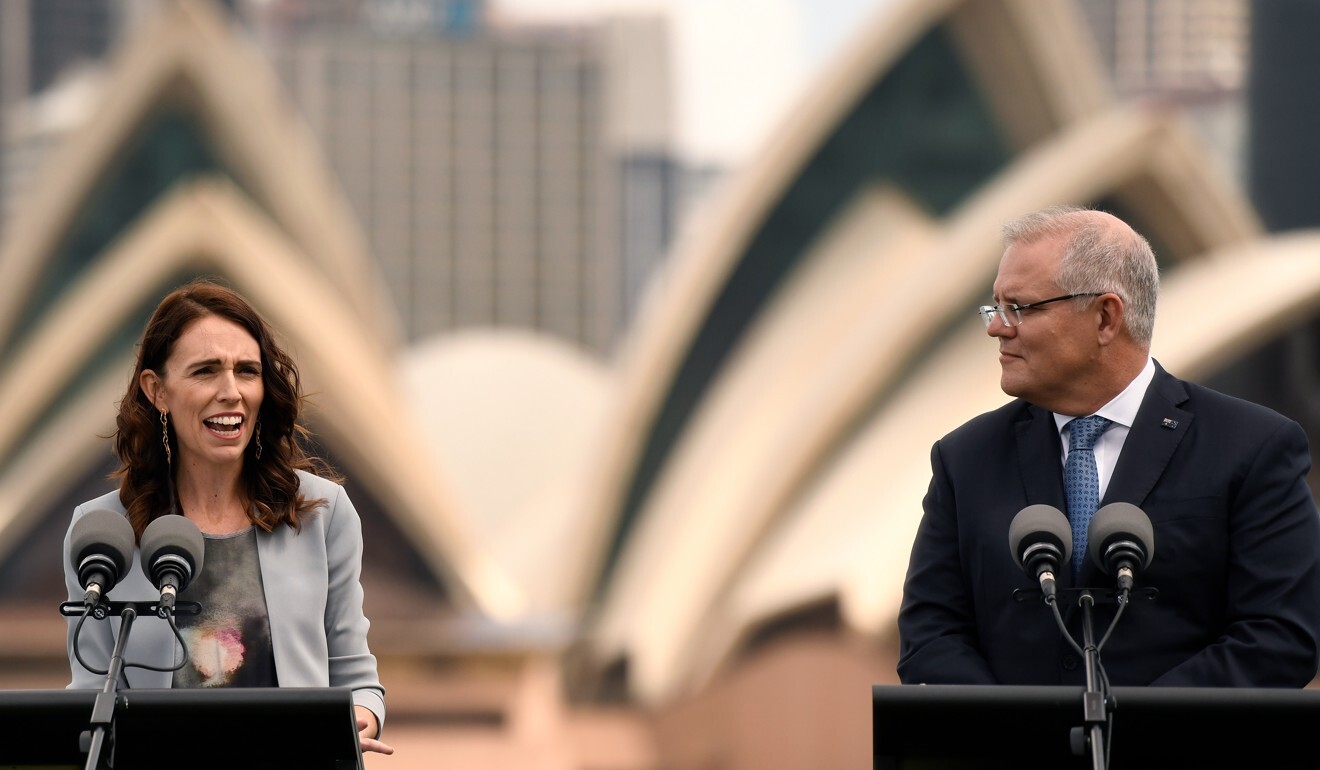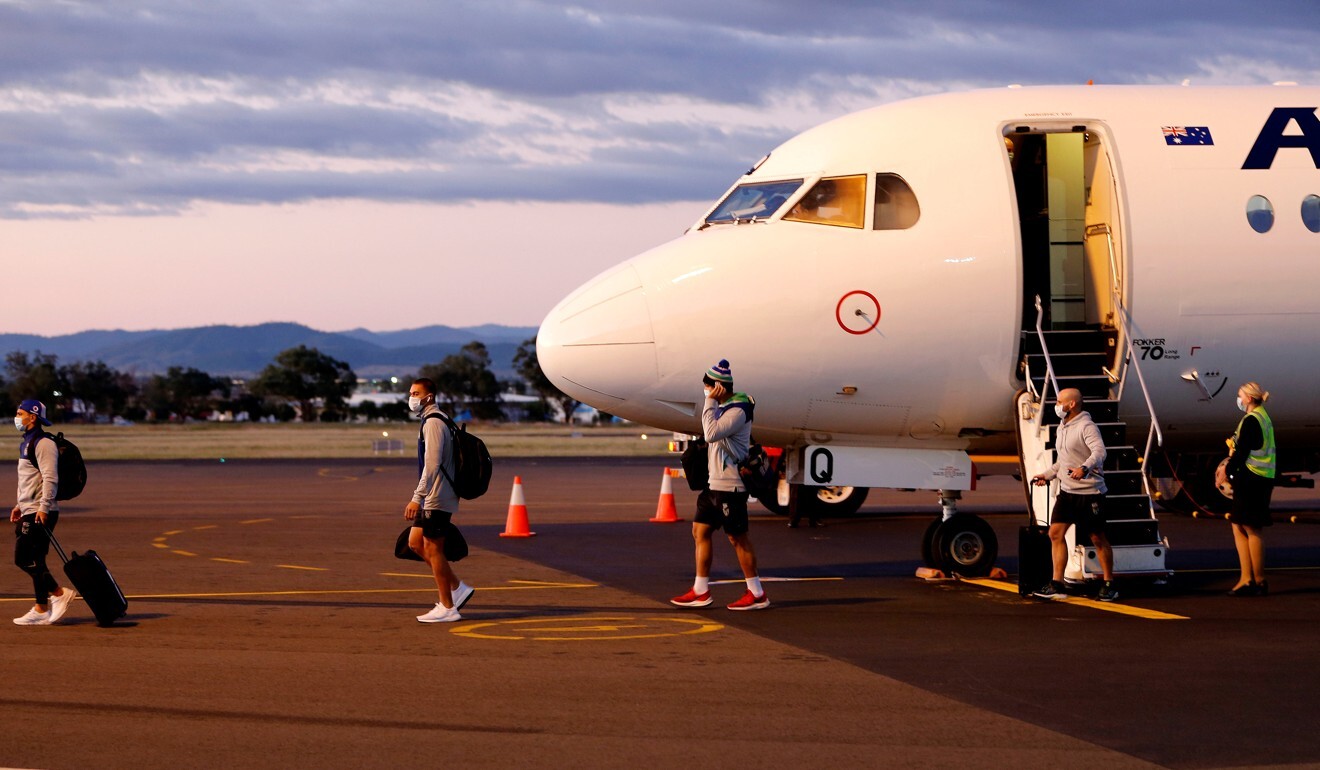
Australia-New Zealand travel bubble with Fiji and Pacific islands ‘can counter China’
- Canberra and Wellington have already agreed to a ‘trans-Tasman bubble’ – now calls are increasing for a ‘trans-Pacific bubble’ too
- This could boost Canberra in its ‘strategic competition’ with Beijing for hearts and minds, but one-upmanship could end in game of ‘whack-a-mole’
The arrangement would allow for freer movement of people and goods and Australian MP Dave Sharma, a close ally of Prime Minister Scott Morrison, opined last week that the “Trans-Tasman bubble doesn’t go far enough … We look out for each other in tough times. A trans-Pacific bubble would help us do just that.”
Sharma also said Australia should be lending a further hand to the Pacific as a means to thwart growing Chinese influence in the region.
“Strategic competition in the Pacific is alive and well, with China and other countries seeking to play a greater role,” he said. “It is important our influence and footprint in our near neighbourhood is visible.”

Alexandre Dayant, a Research Fellow at the Lowy Institute, is monitoring the aid going into the Pacific from both Australia and China. He said so far, neither country had done much.
“China has been very good with providing PPE but so far not much more has been done, and Australia is the same. We were expecting this big answer from Australia, for them to flood the region with cash or loans, but we haven’t seen anything.”
As virus takes Australia back to 1980s, can locals help revive economy?
According to Dayant’s research on incoming aid, China has given around A$1.9 million (US$1.2 million), along with PPE and ventilators.
“I believe, in part at least, this is China trying to change the narrative,” he said. “Initially, China was seen as the source of the problem, now it looks like China has worked very hard to become the solution to the problem.”
Dryant added that the situation in the Pacific might be such that “the best offer will win the hearts and minds”.
“Pacific countries are very aware of the bargaining powers that they have,” he said. “They will accept aid from China, they will accept aid from Australia and New Zealand and all the other traditional partners.
New Zealand, Australia discuss Covid ‘travel bubble’ to allow two-way movement
“We could see more and more from China, leaving Australia to play a sort of whack-a-mole game, where they will always try to come with a better offer.”
Despite possible foreign policy concerns, Australia and New Zealand have so far made it clear that a trans-Pacific bubble will not be considered until the trans-Tasman bubble is deemed safe.

Darren Pettiona, owner of the Iririki resort on Vanuatu’s main island, said the government’s stimulus package had kept them afloat but he was concerned about what would happen once that ran out.
“More than 90 per cent of my guests come from Australia and New Zealand. If they can return, we will be okay,” he said. “But if not, we will have to start laying off staff. We’d have no choice.”
Pettiona, while hopeful the bubble would be formed, acknowledged it was probably a long way off and that it would be more complex than people expected.
“The trick will be in the restrictions other governments set on the bubble,” he said. “Fiji for example, a lot of their trade comes from China, but Australia might say you can’t trade with China if you want to be included in the bubble.”
In any case, public health should drive the negotiation of any agreement. If the virus were to spread throughout the Pacific, locals would probably face a heightened mortality rate due to a lower level of immunity to outside diseases.
Then there is the issue of lack of health care infrastructure to adequately respond to an outbreak. Papua New Guinea has just 15 ventilators for a population of 10 million. Vanuatu has five, three of which were recently donated by China. The Cook Islands has just two.
Hong Kong, Macau and Guangdong consider ways to create a ‘travel bubble’
Michael Rose, a research fellow at the Australian National University’s Crawford School of Public Policy, said while tourism would probably provide more revenue, a safer way of rebooting economies could be done through a labour mobility agreement, given there would be less people travelling.
“Due to the indefinite closure of Australia’s border to non-residents, there could possibly be a labour shortage in the agriculture sector – the labour mobility scheme could resolve that,” he said. “[In return] workers could send money home from Australia and then there are also the soft skills that people would bring back with them, too.”
Rose was sceptical of the conversation being steered towards an Australia-China tug of war for influence in the Pacific.
“Let’s not forget that a trans-Pacific bubble will be temporary, effectively a first step in safely reopening the region to the world, notably including China. Covid-19 is an emergency – and although China won’t be included in the bubble, cooperation rather than competition with China is going to be critical in getting through it.”
Help us understand what you are interested in so that we can improve SCMP and provide a better experience for you. We would like to invite you to take this five-minute survey on how you engage with SCMP and the news.

